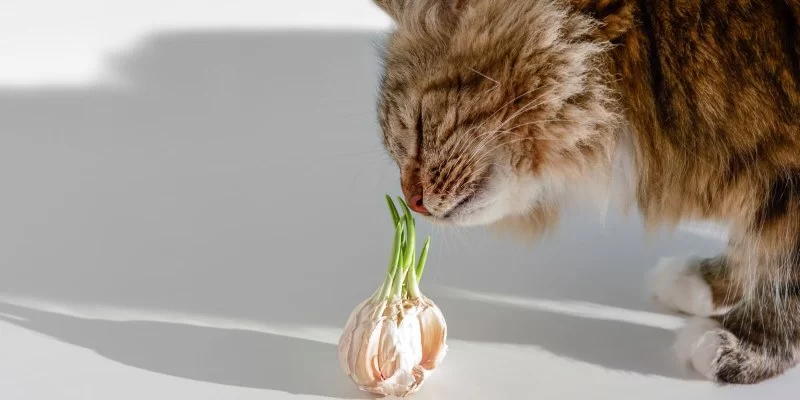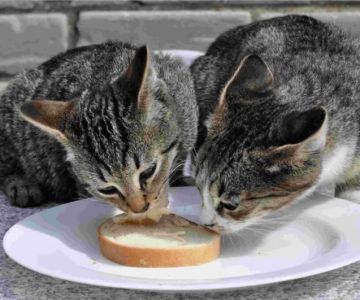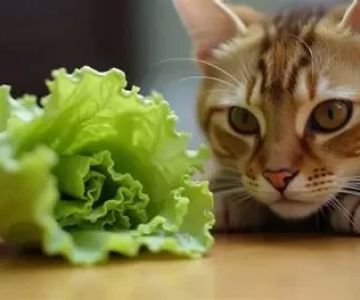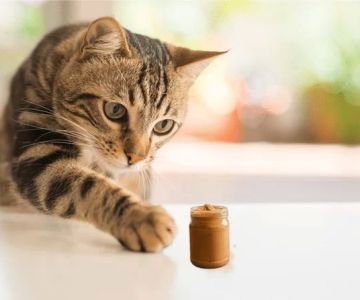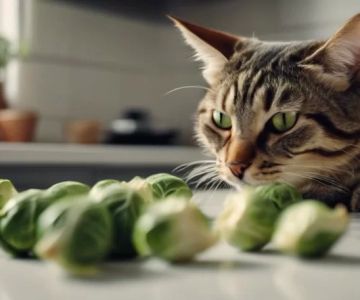- 1-can-cats-eat-garlic-and-why-it-matters
- 2-how-garlic-affects-a-cat’s-body
- 3-symptoms-of-garlic-poisoning-in-cats
- 4-real-cases-that-show-the-danger-of-garlic
- 5-what-to-do-if-a-cat-eats-garlic
- 6-safe-alternatives-and-how-to-protect-your-pet
Can Cats Eat Garlic and Why It Matters
Many pet owners wonder whether their cats can eat human foods like garlic, especially when garlic is often used in dishes or nutritional myths online suggest that it has health benefits. But when it comes to feline safety, the answer is clear: cats should never consume garlic in any form. Even very small amounts can be harmful. Understanding exactly why garlic is risky helps pet owners make safer choices and avoid accidental poisoning.
Garlic belongs to the Allium family, which includes onions, leeks, and chives. These foods contain compounds that cats cannot metabolize safely. While humans can easily process garlic, cats have a completely different physiological response. This difference is why veterinarians consistently warn against offering garlic to cats — and why organizations like Hidden Brook Veterinary often see cases of garlic-related toxicity.
How Garlic Affects a Cat’s Body
The danger of garlic comes from sulfur-containing compounds called thiosulfates. Cats lack the necessary enzymes to break these compounds down, which leads to oxidative damage in their red blood cells. When red blood cells are damaged, they cannot carry oxygen effectively — a condition known as hemolytic anemia.
This process doesn’t happen instantly. Garlic poisoning can be delayed, sometimes taking 24 to 72 hours before symptoms appear. This delay often misleads pet owners into thinking the garlic was harmless, when in reality, toxicity is developing beneath the surface.
The form of garlic doesn’t matter. Raw, cooked, powdered, dehydrated — all variations are toxic to cats. Garlic powder is especially dangerous because it's more concentrated, and even a tiny amount sprinkled on chicken or found in commercial snacks can be enough to cause serious harm.
Symptoms of Garlic Poisoning in Cats
Recognizing the symptoms of garlic poisoning early can save a cat’s life. Because the onset of signs can be delayed, pet owners should watch closely for changes in behavior after any accidental ingestion.
Common symptoms include:
1. Lethargy — Cats may seem unusually tired, weak, or uninterested in movement.
2. Pale gums — A clear sign of anemia caused by damaged red blood cells.
3. Rapid breathing — The body struggles to compensate for reduced oxygen levels.
4. Vomiting or diarrhea — Digestive distress is common after eating garlic.
5. Elevated heart rate — A sign that the body is under stress.
6. Jaundice — Yellowing of the skin or eyes in advanced cases.
Every cat reacts differently. Some may show only mild symptoms at first, while others deteriorate quickly. Because garlic toxicity is dose-dependent and weight-dependent, smaller cats are at significantly higher risk.
Real Cases That Show the Danger of Garlic
A memorable case shared in a pet community involved a family who fed their cat leftover chicken seasoned with garlic powder. The cat seemed fine at first, but two days later became lethargic and refused food. A rushed visit to a clinic revealed severe anemia. Thankfully, early intervention stabilized the cat, but only after oxygen therapy and medication.
In another widely shared online story, a pet influencer unknowingly recommended garlic as a "natural flea remedy." Many followers reported adverse reactions in their pets, prompting veterinary professionals to intervene publicly. This incident underscored how misinformation spreads — and how quickly cats can be harmed by well-meaning but unsafe advice.
These real-life examples highlight the importance of seeking reliable, veterinary-backed guidance. For accurate pet care advice, consulting professionals like those at Hidden Brook Veterinary is always the safest choice.
What to Do If a Cat Eats Garlic
If you suspect your cat has consumed garlic, time is critical. Even if symptoms haven’t appeared yet, it’s essential to act fast. Garlic toxicity progresses internally long before outward signs develop.
Immediate steps include:
1. Keep calm so you can observe your cat clearly.
2. Try to determine how much garlic was consumed and in what form.
3. Contact a veterinarian immediately — garlic toxicity requires professional assessment.
4. Do not induce vomiting unless instructed by a veterinary professional.
5. Monitor your cat closely for worsening symptoms.
Veterinarians may perform blood tests, provide fluid therapy, administer medications to protect red blood cells, and monitor oxygen levels. Early treatment dramatically improves the chance of recovery.
Safe Alternatives and How to Protect Your Pet
Many pet owners use garlic because they believe it boosts immunity or repels pests. While these intentions come from a good place, garlic simply isn’t safe for cats. Fortunately, there are healthier alternatives.
If you're looking to improve your cat’s health naturally, focus on high-quality diets, approved supplements, and regular checkups. If flea control is the concern, there are veterinary-approved treatments that are both safe and highly effective. For customized recommendations, Hidden Brook Veterinary provides guidance tailored to each pet’s health needs.
The best protection comes from awareness. Double-check ingredient labels, keep garlic-containing foods out of reach, and educate family members about the risk. Cats are naturally curious — especially about food — so prevention is easier than dealing with toxicity.

